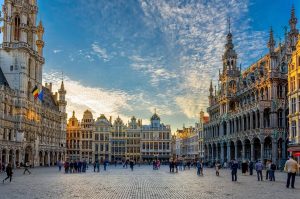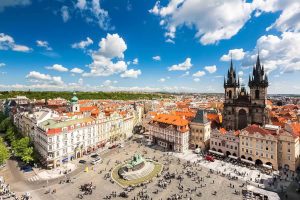
30 interesting facts about Seychelles
- 👁️ 391
Seychelles, an archipelago nation in the Indian Ocean, is renowned for its paradisiacal beaches, crystal-clear waters, and lush tropical landscapes. While it is a country composed of 115 islands, when people refer to “Seychelles city,” they are often thinking of Victoria, the tiny but vibrant capital located on the main island of Mahé. Victoria is not just the political and economic hub of the country; it is also a melting pot of cultures, history, and natural beauty. Despite its size, Victoria and the broader Seychelles offer a wealth of fascinating insights into Creole culture, colonial history, and environmental conservation. Let’s explore some interesting and informative facts about Victoria, Seychelles, and its surroundings that highlight the unique character and charm of this island nation.
- Victoria is one of the smallest capitals in the world and the only major port in Seychelles.
- The city was named after Queen Victoria by the British in the 19th century.
- A replica of London’s Big Ben, known as the Little Ben or the Victoria Clocktower, stands at the heart of the city as an iconic landmark.
- Seychelles was uninhabited until the late 18th century when French settlers arrived, making it one of the last places on earth to be colonized.
- The Seychelles National Botanical Gardens in Victoria are over a century old and home to a wide variety of endemic and exotic plants, including giant tortoises and fruit bats.
- Seychelles became a British colony in 1814 and gained independence in 1976, becoming a republic within the Commonwealth.
- The country’s population is a diverse blend of African, French, British, Indian, and Chinese heritage, contributing to a rich Creole culture.
- Creole (Seselwa), English, and French are the official languages of Seychelles.
- The country operates under a multi-party political system and is known for its efforts in environmental conservation.
- Seychelles is the first country to have a constitution that includes climate change and environmental protection measures.
- The island nation has one of the largest marine protected areas in the world, safeguarding its unique marine biodiversity.
- Victoria’s Sir Selwyn Selwyn-Clarke Market is a vibrant spot where locals sell fresh fish, fruits, vegetables, and spices, offering a glimpse into the daily life of Seychellois.
- The country is home to two UNESCO World Heritage Sites: Aldabra, the world’s second-largest coral atoll, and Vallée de Mai, a prehistoric forest home to the famous Coco de Mer.
- Seychelles is committed to renewable energy and aims to increase its renewable energy usage significantly in the coming years.
- The islands are a popular destination for weddings and honeymoons, known for their romantic and secluded beaches.
- Despite its small size, Seychelles has a vibrant arts scene, with numerous galleries and workshops showcasing Creole crafts, art, and music.
- The country has some of the rarest endemic birds, including the Seychelles black parrot and the Seychelles warbler.
- The Seychelles rupee (SCR) is the national currency.
- The nation is renowned for its progressive environmental policies, including a ban on single-use plastics.
- Seychelles’ economy is based primarily on tourism, fishing, and small-scale manufacturing.
- The Morne Seychellois National Park, which covers over 20% of Mahé Island, offers trails with breathtaking views of the archipelago.
- The granite mountains found in Seychelles are among the oldest on Earth.
- The country is known for its sustainable tourism practices, balancing visitor needs with environmental conservation.
- Seychelles was once a haven for pirates during the 17th and 18th centuries.
- The islands are home to some of the most luxurious eco-friendly resorts in the world.
- The outer islands of Seychelles are low-lying coral atolls and reef islands, offering exceptional spots for diving and snorkeling.
- Seychelles is part of the African Union, the United Nations, the Commonwealth of Nations, and La Francophonie.
- The country aims to be a leader in eco-tourism and sustainable travel.
- Victoria features a mix of colonial and Creole architecture, with brightly colored buildings and traditional wooden homes.
- The International Carnival of Victoria, held annually, showcases the multicultural heritage of Seychelles through music, dance, and parade floats.
In conclusion, Victoria, Seychelles, and its surrounding islands offer a unique blend of natural beauty, cultural richness, and environmental consciousness. This small capital and its nation stand out on the global stage for their commitment to preserving their pristine environment while welcoming visitors to enjoy their unparalleled landscapes and vibrant Creole culture. Seychelles remains a testament to the possibilities of harmonious coexistence between humans and nature, making it a truly special place to visit and explore.











